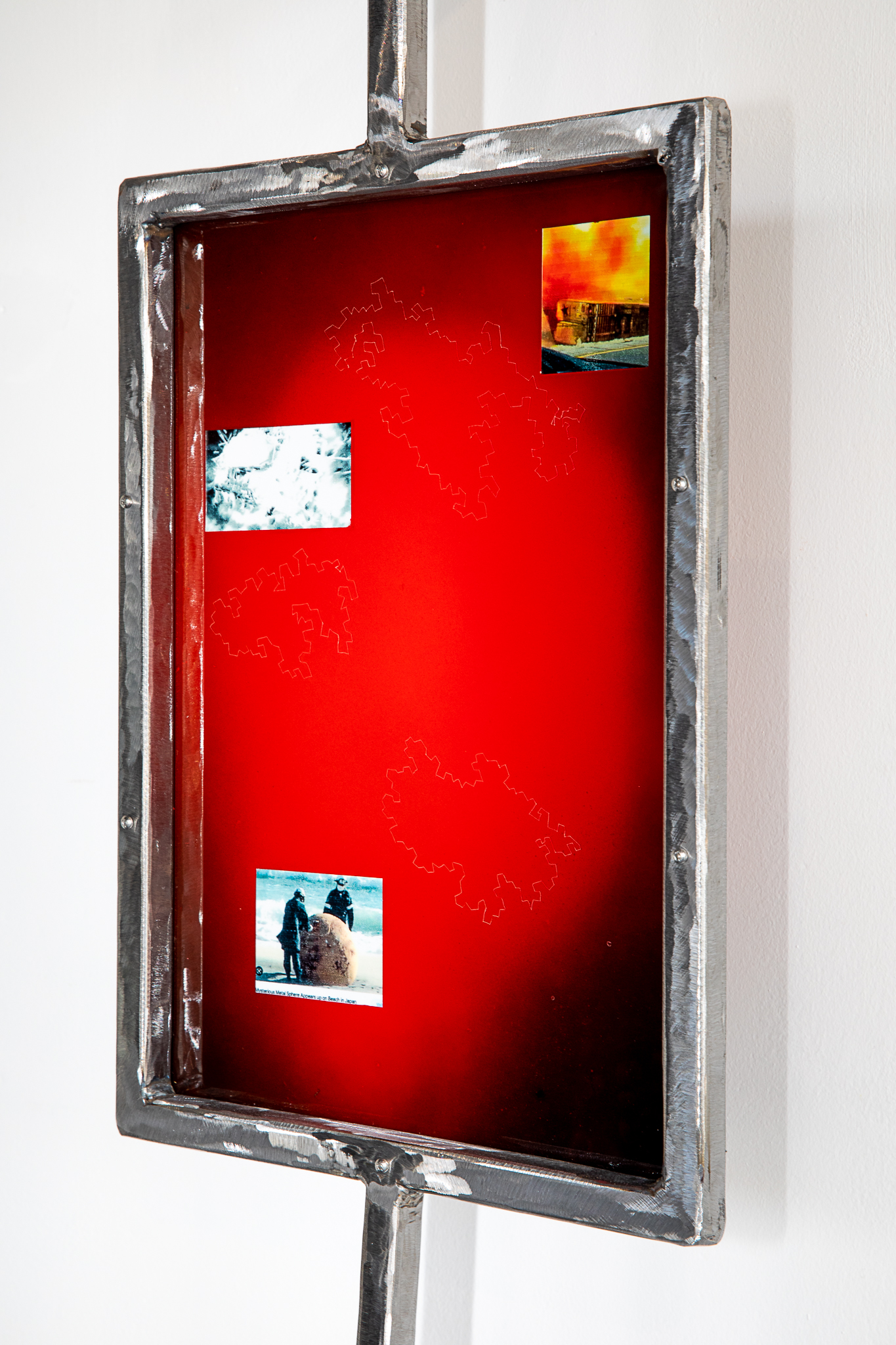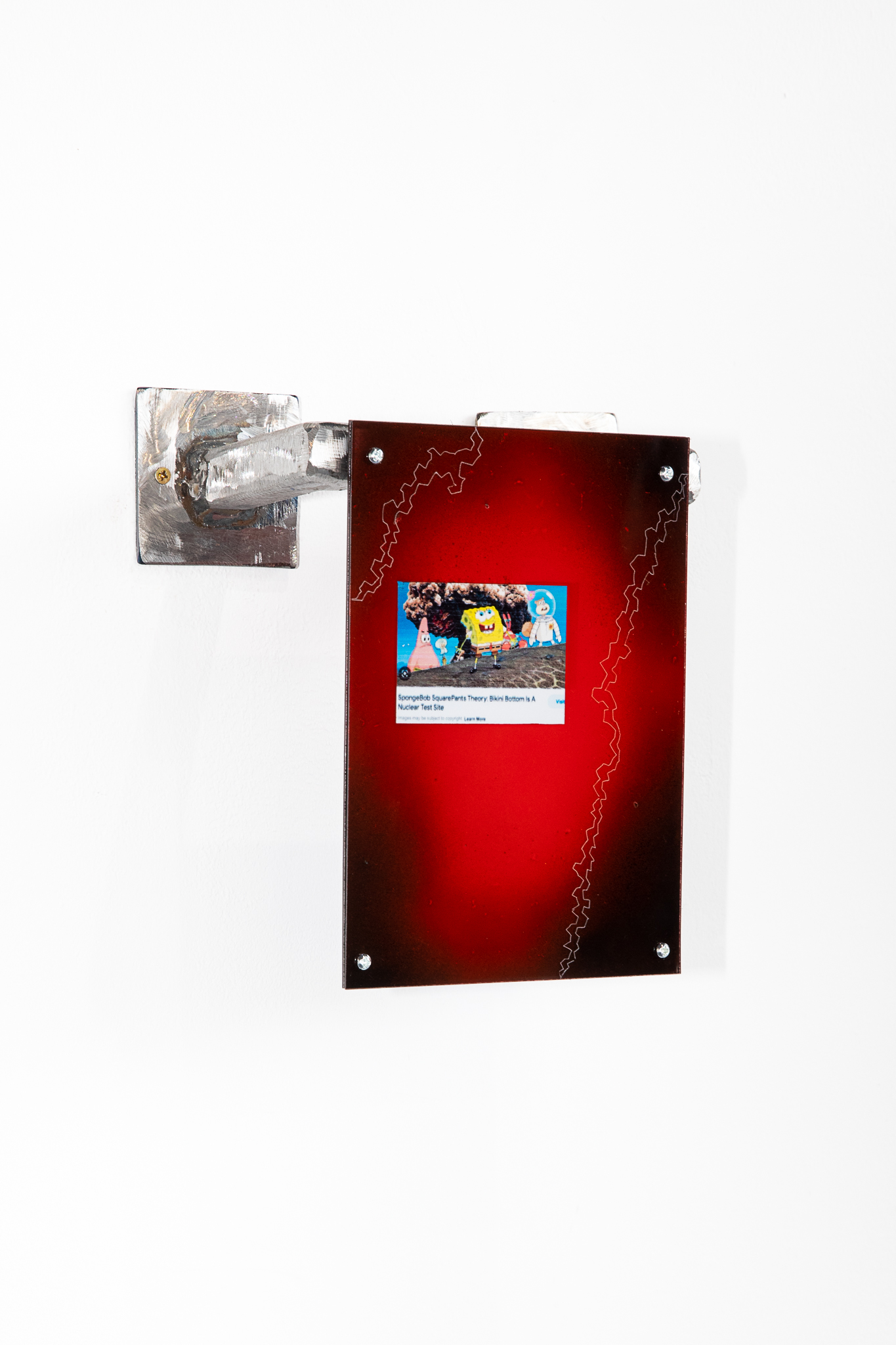His practice investigates the role of technologically-mediated images in creating digital mythologies.
DOOMWASHING2023
Exhibition
Digital prints on spray painted acrylic in custom-made steel frames, digital collage on vinyl, shopping trolley, spray painted fridge door
Exhibition
Digital prints on spray painted acrylic in custom-made steel frames, digital collage on vinyl, shopping trolley, spray painted fridge door
DOOMWASHING opened in AMP Gallery in London 10-12th March 2023, showcasing new works by Juliusz Grabianski and Anna Komitska.
As we watch the world burn and societies collapse, we can’t help but wonder: what makes the apocalypse so sexy?
According to the Strauss–Howe generational theory, western history repeats itself in 80 year cycles. The very end of each cycle, known as the Crisis, is what we are living through right now. A single glance at the news would be enough to send a Victorian child into a coma - and yet, at a time of imminent catastrophe, dystopian aesthetics proliferate in all aspects of culture. From fashion and cinema, to art and music, apocalypse is so very in.
What is the appeal of the apocalypse? Is our death drive alive and well, or perhaps are we craving a fresh start, a blank slate to start with instead of fixing what’s broken? Or maybe our obsession with the gloomy is a defence mechanism - if the future has been cancelled and we’re all heading towards our demise, we might as well look good doing it.
Nuclear anxieties are back, but the Cold War panic seems to have spread beyond the atomic bomb - incomprehensible technologies dictate almost every aspect of our lives. Historically, technology has often been described as Satan’s work, and after all, the apocalypse has religious origins. Perhaps we are living at the end of times - or perhaps everyone else before us thought so too.
As we watch the world burn and societies collapse, we can’t help but wonder: what makes the apocalypse so sexy?
According to the Strauss–Howe generational theory, western history repeats itself in 80 year cycles. The very end of each cycle, known as the Crisis, is what we are living through right now. A single glance at the news would be enough to send a Victorian child into a coma - and yet, at a time of imminent catastrophe, dystopian aesthetics proliferate in all aspects of culture. From fashion and cinema, to art and music, apocalypse is so very in.
What is the appeal of the apocalypse? Is our death drive alive and well, or perhaps are we craving a fresh start, a blank slate to start with instead of fixing what’s broken? Or maybe our obsession with the gloomy is a defence mechanism - if the future has been cancelled and we’re all heading towards our demise, we might as well look good doing it.
Nuclear anxieties are back, but the Cold War panic seems to have spread beyond the atomic bomb - incomprehensible technologies dictate almost every aspect of our lives. Historically, technology has often been described as Satan’s work, and after all, the apocalypse has religious origins. Perhaps we are living at the end of times - or perhaps everyone else before us thought so too.
















